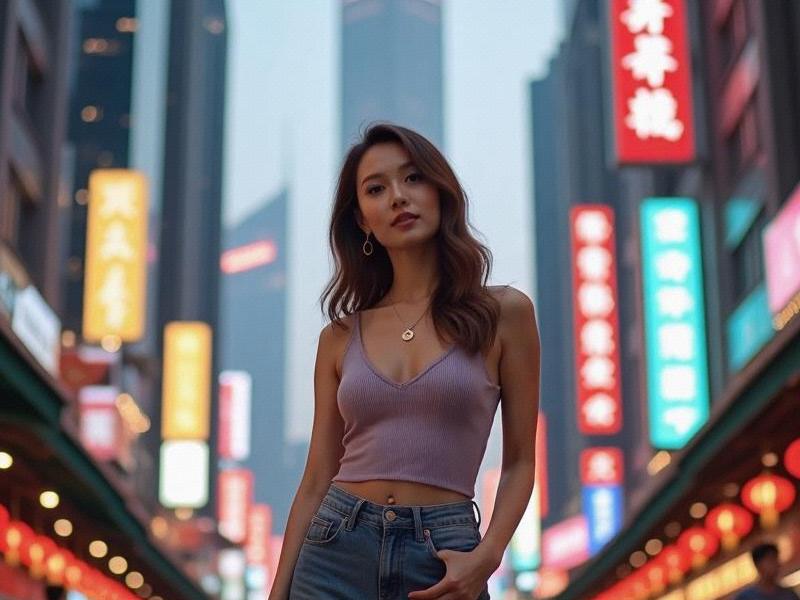Beyond the Cheongsam: The Evolving Identity of Shanghai Women in the 21st Century
⏱ 2025-06-09 00:11 🔖 阿拉上海娱乐联盟
📢0℃

[The Shanghai Woman Paradox]
On Nanjing Road at lunch hour, finance executives in tailored suits pass grandmothers practicing tai chi - this juxtaposition encapsulates the complex reality of Shanghai womanhood that defies simplistic "oriental beauty" stereotypes. The city's female residents have long served as both symbols and architects of China's modernization.
[Historical Foundations]
Three transformative periods:
1. The Treaty Port Era (1840s-1940s)
- Emergence of the "Shanghai Modern Girl"
- Cheongsam as progressive fashion
- First generation of educated women
2. The Socialist Period (1950s-1970s)
- "Iron Girl" worker ideal
- Gender role standardization
- Industrial employment opportunities
3. The Reform Era (1980s-Present)
- Reemergence of fashion culture
- Professional class expansion
- Globalized femininity concepts
上海龙凤论坛爱宝贝419
[Contemporary Realities]
2025 Demographic Snapshot:
- 52% of managerial positions held by women
- Average marriage age: 31.2 years
- 68% of luxury consumers female
- 45% of tech startup founders women
[Professional Archetypes]
Five modern prototypes:
1. The Fortune 500 Executive
- Bilingual business leaders
- Work-life balance challenges
- International education backgrounds
2. The Creative Entrepreneur
- Design studio owners
- Cultural hybrid aesthetics
- Digital native marketers
上海贵族宝贝龙凤楼
3. The Tech Innovator
- AI research scientists
- Startup culture participants
- STEM education advocates
4. The Cultural Custodian
- Traditional arts preservers
- Heritage skill practitioners
- Neighborhood community leaders
5. The Multidimensional Homemaker
- Family-business managers
- Modern parenting approaches
- Domestic technology adopters
[Beauty Standards Evolution]
Key shifts:
- From pale skin to healthy glow
- Slim figure to athletic physique
爱上海 - Luxury brands to conscious consumption
- Made-up looks to "natural" enhancement
[Challenges and Controversies]
Critical issues:
- Persistent "leftover women" stigma
- Workplace discrimination cases
- Beauty industry pressures
- Intergenerational expectation gaps
[Future Projections]
2030 Trends:
1. Delayed childbirth norms
2. Female leadership expansion
3. Customized beauty tech
4. Hybrid cultural identities
[Conclusion]
As sociologist Dr. Li Wen notes: "The Shanghai woman has always been a mirror reflecting China's social transformations - never just a decorative surface, but an active participant shaping the nation's modernization narrative. Their true beauty lies in this continuous reinvention."
The Velvet Rope Revolution: How Shanghai's Elite Clubs Are Redefining Nightlife LuxuryShanghai: A Vibrant Metropolis Where Tradition Meets Modernity【午夜奏鸣曲】——解码上海娱乐会所的三重空间叙事The Evolution and Flourishing of Shanghai's Leisure Clubs: A Glimpse into the City's Dynamic Lifestyle Scene"Tides of Change: How Shanghai Reshapes the Yangtze River Delta Ecosystem""Shanghai 2025: Where Future Meets Tradition in China's Most Dynamic Metropolis"Shanghai's Green Transformation: How the City is Leading China's Eco-Friendly RevolutionShanghai's Nightlife Renaissance: How Luxury Clubs Redefine Urban Entertainment【潮汐之城】上海与周边七城的量子纠缠"Yangtze Delta Renaissance: How Shanghai and Its Satellite Cities Are Creating China's Most Dynamic Metropolitan Region"

